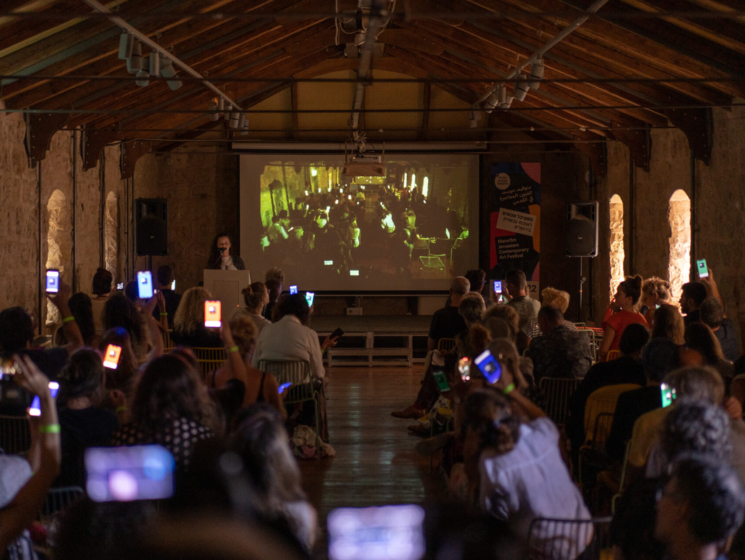Alongside the spiritual and celestial life that has been developing on Mt. Zion for millennia, it is also a place of the mundane, the earthly, and everyday, intimately linked to the political history of Jerusalem. In the 16th century, Suleiman the First, Sultan of the Ottoman Empire, appointed Sheikh Ahmad el-Dajani as Custodian to the Tomb of Nebi Daoud due to the sanctity of the place. For over 400 years the Dajani family has protected the tomb and its surroundings. In the 19th century, the family was largely responsible for establishing the neighborhood named after them, ‘Al-dajaniya’ that included private homes and the cemetery surrounding the tomb. At the time, with the improving relations between the Ottoman authorities and the city’s non-Muslim populations, and the enacting of the capitulation treaties, Christians returned to Mt. Zion and built several religious facilities, among them the Gobat School, the Dormition Abbey, and the Ad-Cenculum Franciscan monastery. In the area adjacent to Mt. Zion, we can also find the Armenian quarter, probably established in the Middle Ages, with some of its buildings also located on the mountain. Since then, the mountain has been home to many diverse communities, all residing on the same piece of land.
In May 1948, with the occupation of Mount Zion by the 4th regiment of the Palmach, the Dajani family was displaced from their home, and the territory was divided between areas under Israeli control and areas under Jordanian control, until 1967 when East Jerusalem was occupied by the Israeli army. The homes of the Dajani family were used to establish Jewish religious institutions, build private homes, and erect public institutions – some of them have a distinct connection to local culture; a branch of the “Bezalel” art school operated on Mount Zion; the home of sculptor David Palumbo, which still exists today, was located there; the studio of artist Perli Pelzig was established there, and for about twenty years a residency program for artists from abroad (JCVA), founded by Yona Fischer together with the Jerusalem Foundation, was based on the mountain. Thus, the deep connection between absentee properties and cultural institutions posed many questions for this exhibition regarding the role of art in areas of conflict.
Due to the many communities that are located on it today, Mt. Zion has a unique texture, delicate and volatile, comprised of parallel beliefs, territories, and narratives regarding the same piece of land. Concurrently, Jewish religious extremism has been taking hold of the area in recent years, affecting the daily life of its surroundings. In this light, Believe aims to be an exhibition of multiculturalism in the midst of a conflict zone, where the multiplicity of communities and cultures that are part of this place can be expressed freely.
Believe will be dispersed across several buildings on Mt. Zion and its surroundings, some of which are private homes and some public facilities. By connecting to the communities that live on the mountain, to their unique lifestyle and their varied narratives, Believe will afford its audience exposure to and acquaintance with the diversity of mindsets and events that are part of this place.
The exhibition will oscillate between questions dealing with religion, territory, justice and culture, and address faith not only through the religious significance of the word, but as a catalyst that is at the heart of every person, such that links narrative to space, endowing the imagined territory with real volume that materializes in our lives as well as on the land.
The exhibition is enabled through cooperation between the Jerusalem Intercultural Center, the inhabitants of the mountain, its institutions, artists from Jerusalem and beyond it, Israelis and Palestinians of different faiths and beliefs.
Participants: Laila Abd Alrazaq, Faten Abu Ali, Jafra Abu Zoulouf, Ilan Barkani, Joshua (Shuky) Borkovsky, Roy Cohen, Relli De Vries, Niv Gafni, Raafat Hattab, Hanita Ilan, Yara Kassem Mahajena, Daniel Kiczales & Naomi Yoeli, Ella Littwitz, Saher Miari, David Palombo, Nira Pereg, Public Movement, Ester Shneider, Dalleh Tarabeh, Uri Zamir, Manar Zuabi




